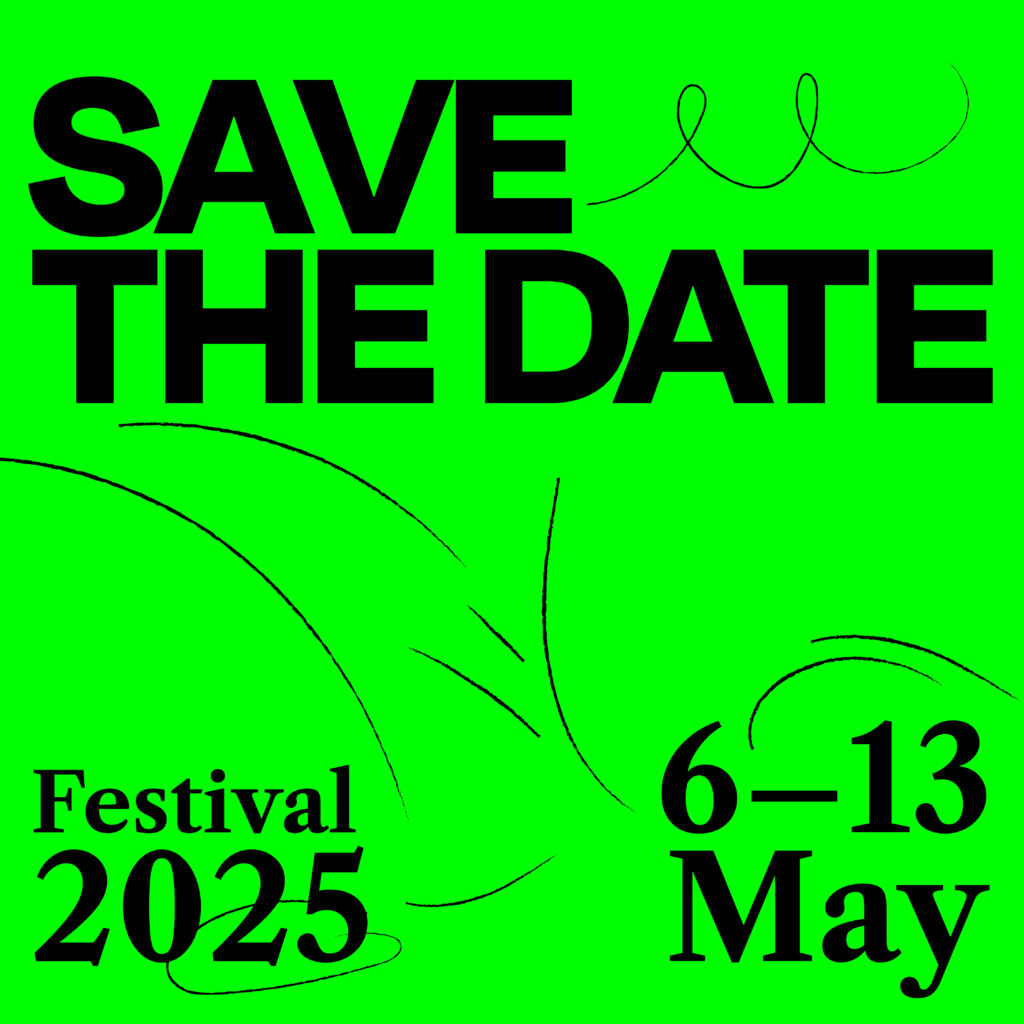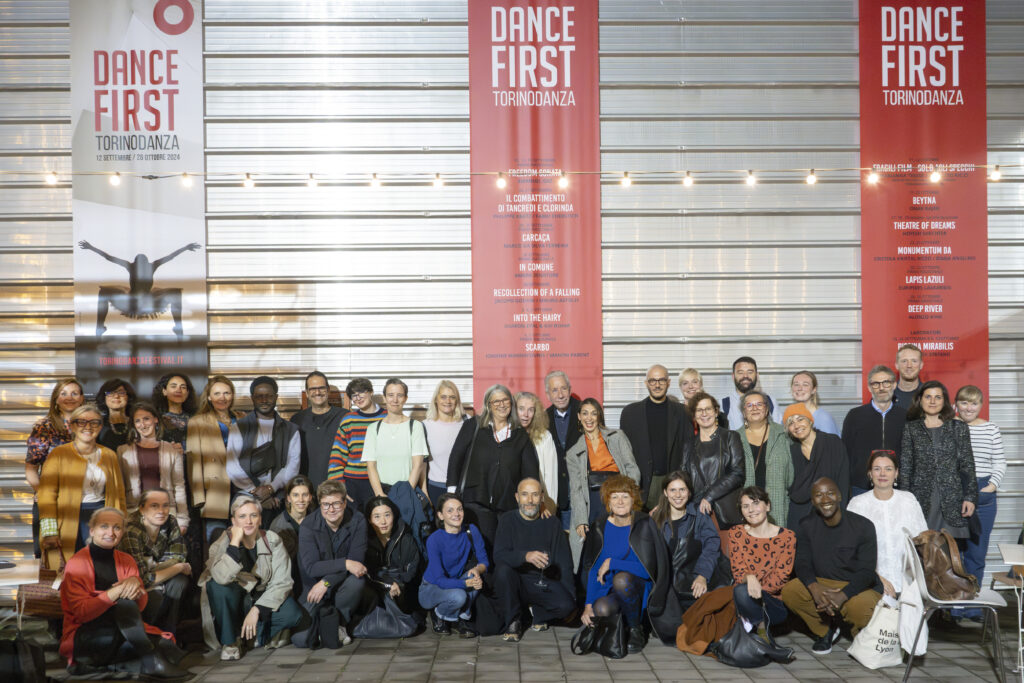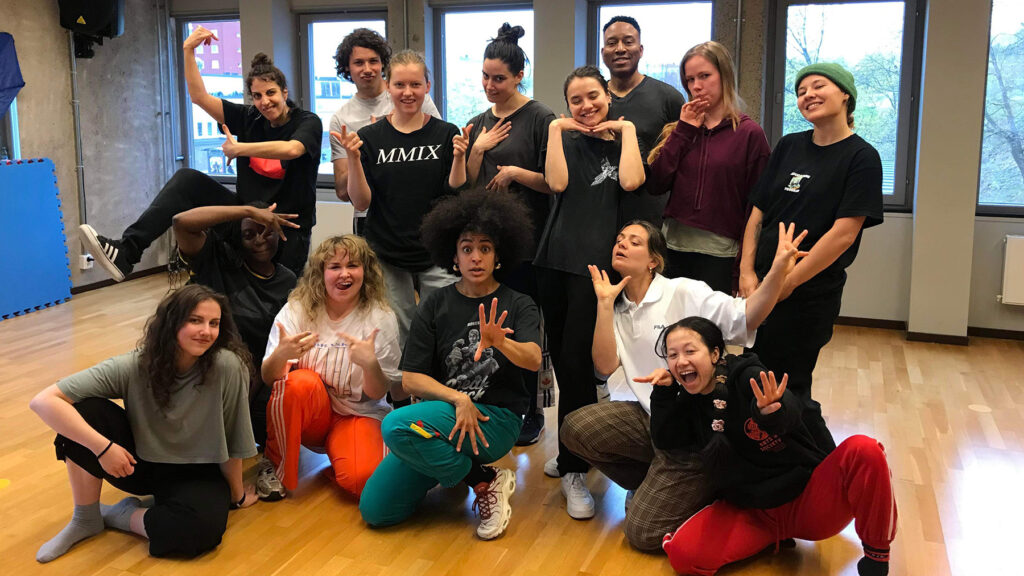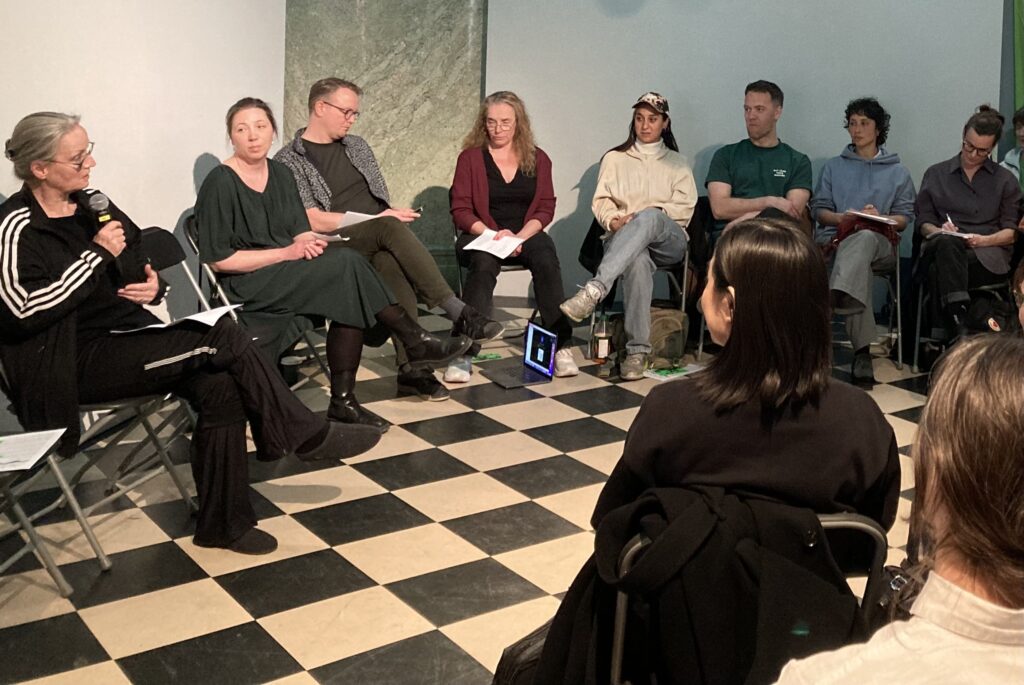How do we advocate for dance? Who are we advocating for, and how?
Together with some of the festival’s artists, dance professionals and organisations, we have discussed the different ways of protesting and advocating for dance on May 7th at Dansmuseet, at the initiative of STHLM DANS.
The aim of the discussion was to give space to the sharing of concrete experiences, actions and methods to advocate for the dance sector in Sweden and internationally, bringing in the perspectives of the artists, the producers and the organisations. From public protests to petitions and lobbying, the repertory of action is wide and varied, and independent artists and organisations can sometimes feel a bit lost in how to collectively advocate for our art form towards the audience, funders and politicians.
Here are some key points and notes from the participants of the day, whom we would like to thank warmly for their contributions. You can also read the review of the debate and the performance of Efva Lilja by Maina Arvas in Daggers Nyheter here.
The event started with a powerful statement by Efva Lilja, Choreographer (Sweden), ‘With Love’ which we have published in May and which you can read here.
Lisa Poska, CEO, Dansalliansen (Sweden) started by reminded us that politics is about priorities. Politicians always have to choose between different priorities, so our role is to help the politicians to understand our work and to recognise us as a priority.
It is clear that dance has everything to contribute to society with potential new and big audiences, a focus on movement and health and with the interactive aspect of the practice. So the case for dance is potentially very strong. We need to present this narrative to the politicians, who are always looking for solutions.
It is key that in this endeavour, we prioritise the whole field, that we help and support each other and don’t cannibalise ourselves.
Lisa also mentions a letter signed by 55 organisations to the Minister of Culture which still needs to receive an answer.
Amy Fee, General Manager at Danscentrum Sweden. Post-covid, Danscentrum Sweden has been elaborating a statistical tool to be able to show stats (audience, employment etc.) about culture to politicians and funders. As we know, cultural data in our dialogue with politicians and the stakeholders. Through its statistics, it is an advocacy tool, which can be used for free by Danscentrum members.
In a wider scope, Danscentrum Sweden, together with some other organisations in Sweden has been advocating for the following points:
- Advocate on why young people should have access to dance, theatre and performing arts in Sweden
- The environmental shift is in need of artists
- The value of artistic decision making process
Read more about the stats tool here: www.danscentrum.se/danscentrums-statistikverktyg
Sepideh Khodarahmi, Choreographer (Sweden) starts by reminding us of the principle of disobedience. How can we re-activate it? We, in Sweden, are not used to disobedience, as the system has been working for us relatively well so far. Sepideh brings in the situation in Iran as an interesting example: disobedience is key, and is very underground of course.
The other key value is solidarity. Again, in Sweden we expect the system to take care of us, and solidarity has not necessarily been at the centre of our narratives. How can we challenge this?
As an example, Sepideh tells us of interesting ways of distributing money in some underground cultural projects in Iran, which proceed with equity, meaning that the ones who need it the most get more, and those who needs it less gets less. This is a pragmatical, grassroots level way for these groups to make sure that creators can continue working.
Sepideh tells us she is keeping hope and is excited to see how things can change in Sweden, with the ideas of disobedience and solidarity at the centre of these changes.
Gabor Varga, Dancer, choreographer, performing arts curator for Festival Antigel (Switzerland). Gabor starts by telling us about his case study, the festival Antigel, which was created 15 years ago. At this point, it was the common discourse in Geneva that there was no space for new cultural initiatives. Challenging this narrative, the principle of Antigel has been the decentralisation. In the canton of Geneva there are 45 municipalities: the festival brings culture (dance, music…) everywhere in the region.
The Director at the time also took the time go and talk to the local politicains to expose the vision of the festival. The strategy worked well, with audience numbers rising in Geneva and the region, showing to the politicians the space that culture could take in people’s life. The festival had to go out of the obvious theatres, to go in ‘secret’ or non obvious cultural spaces, which also attracted the interest of the audience.
Let’s not forget the universality of the language of dance and its power. In a way, concludes Gabor ‘we tricked people into loving dance!’
Lilian Steiner, Choreographer (Australia). Reflecting on the themes of the talk, Lilian asks several challenging questions:
- How can we make our practice more accessible and available to audiences, so that they can understand dance as a daily context, that embodied experience is essential to our everyday and not reserved only for artistic contexts.
- People tend to dance when they are young, and then they stop, why? And can we shift this narrative?
- Could dancing be as accessible as sport or as easy to engage with as listening to music?
Lilian points a challenge for artists: how can we reach politicians and decision makers when we are nomadic and independent?
Lilian also emphasizes that we should promote the humanity of dance, the emotions it can bring in, such as joy, as well as the ways it can help us to deal with harder emotions such as anxiety and grief. Dance people, Lilian reflects, are sensitive to the space they take and what/how they contribute to it. With this kind of approach, it’s important that dancers do take space, as it can create positive ripples beyond the individual.
With this in mind, she suggests that dance skills can and should be used and recognised in larger societal scenarios, including within politics. Lilian concludes that politicians and much of society tend to prioritise directness which can cut off many potentials, and that the dance sector practices thinking in exquisite trajectories that venture far, in order to gather broad perspectives, and that this capacity should be emphasised and acknowledged.
Emelie Johansson, Manager at SITE (Sweden) starts by pointing a key moment when at a panel as part of STHLM DANS one year ago, Anna Efraimsson (MDT) said to the participants ‘we, the dance sector should meet and talk more often’. Emelie took this proposal seriously and reflected on how the professionals in our sector do indeed need to connect and discuss more reguralry. How can we support each other if we do not know each other’s realities?
From this, SITE, MDT and Dansnät Sverige decided to connect and to create a meeting a few times a year to exchange on the current situation, inviting a few dance organisations, venues, producers (etc.). A reality that had to be taken into consideration, of course, is that freelancers don’t have the resources to go to a lot of meetings for free, so the professionals with regular income should mobilise and commit to this. Another principle was that, as part of this informal meeting, ‘we agree to disagree’ and that we speak with multiple voices. The meeting will tour between different locations and partners. Doing this, we are becoming aware of each others’ realities, we are building a dialogue and trust, to be able to address stakeholders.
Magnus Nordberg, Founder and CEO, Norberg Movement (Sweden) has prepared some key points for us, as guiding principles to advocate for our art form:
- We have devoted ourselves and our working life to this sector, let other people know this – it is powerful.
- Read up on politics and vote!
- Other sectors are important too, and not only the cultural sector is suffering now.
- Practice your pitch about your dance, your commitment, and be ready to articulate and to adapt it to different contexts.
- Advocacy and dance practice are not in contradiction.
- Give clarity. Organise yourself.
- Be ready to advocate for other people’s work, speak up for the sector as a whole.
- Switch the narrative from which series you streamed, to which dance show you attended, and talk about it.
- Price your practice.
- Be ready to talk about your needs.
- Credit properly and echo out.
- Keep something in your practice that can stay alive without funding.
- Show up for the art, be an ambassador for dance, outside of the sector.
Marie Proffit, Artistic Director, STHLM DANS (France/Sweden) concluded by reminding us of the key points in this dialogue, and by presenting ‘Labour and Movement’ by Linda Blomqvist and Anna Johansson, a commission by STHLM DANS, Weld and SKH, to create a choreographic protest in public space, with a participative element. This is concrete example on how a festival can contribute to advocate for the art form in a public and somehow political way. With audience development and the visibility of our practice at the centre of our vision, STHLM DANS is committed to advocate the dance sector together with the field in Sweden and abroad, and we hope to continue this conversation.
A talk supported by Big Pulse Dance Alliance.






